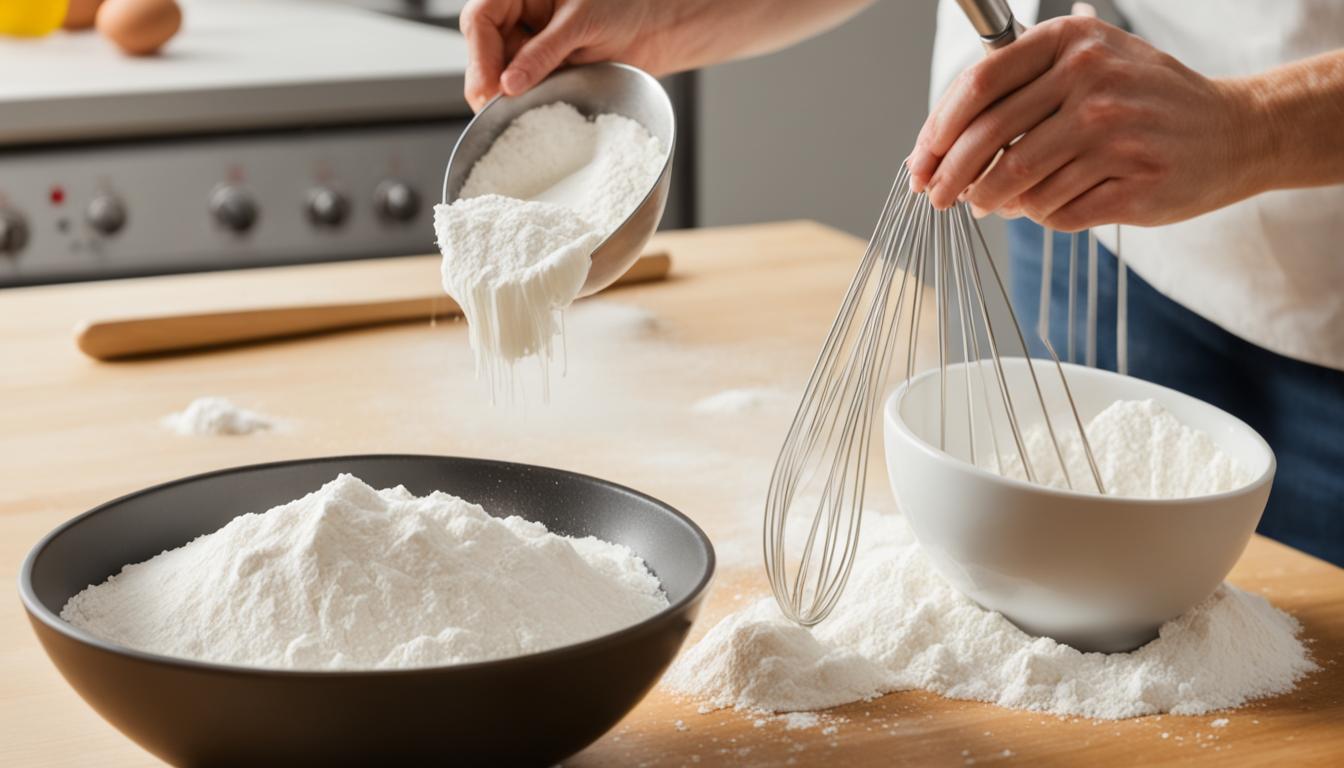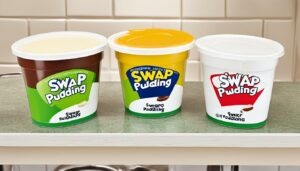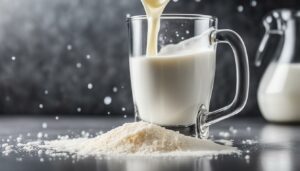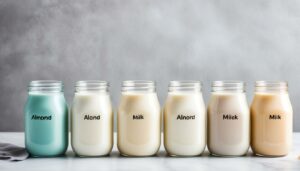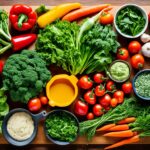Did you know that self-raising flour, a staple in many baking recipes, might not be the best choice for making Yorkshire puddings? While some recipes may suggest using self-raising flour, it is generally recommended to stick with plain flour for the best results.
Yorkshire puddings are a classic British dish traditionally made with plain flour, eggs, and milk. The use of self-raising flour can result in less rise and a different texture in the Yorkshire puddings. Stick around to learn why self-raising flour might not be the ideal ingredient for your Yorkshire pudding recipe.
- Using self-raising flour can result in less rise and a different texture in Yorkshire puddings.
- Traditionally, Yorkshire puddings are made with plain flour, eggs, and milk.
- Stick with plain flour for the best results in your homemade Yorkshire puddings.
Contents
- 1 The Importance of Oven Temperature for Perfect Yorkshire Puddings
- 2 The Origins of Yorkshire Puddings
- 3 Traditional Yorkshire Pudding Recipe
- 4 Can I Use Olive Oil in Yorkshire Pudding Recipe?
- 5 Tips for Filling and Baking Yorkshire Puddings
- 6 Serving Suggestions for Yorkshire Puddings
- 7 Pro Tips for Making the Perfect Yorkshire Puddings
- 8 Traditional Yorkshire Pudding Recipe
- 9 Using Self-Raising Flour in Yorkshire Pudding Recipe
- 10 Conclusion
- 11 FAQ
- 12 Source Links
The Importance of Oven Temperature for Perfect Yorkshire Puddings
To achieve the perfect rise in Yorkshire puddings, maintaining the right oven temperature is crucial. The oven temperature plays a vital role in the success of your delicious puddings. Heating the oven to the correct temperature and ensuring it remains consistent throughout the baking process ensures the desired outcome.
For ideal Yorkshire puddings, preheat your oven to 220C/425F. This high temperature allows the batter to quickly set and create that iconic rise and crispy texture. But how do you know if your oven is really at the right temperature?
An oven thermometer is a handy tool to have. It helps you accurately measure and manage the temperature, ensuring your puddings bake at the recommended level of heat. Place the oven thermometer inside the oven to monitor and maintain the desired temperature throughout the entire baking time.
Consistency is key when baking Yorkshire puddings. Any fluctuations in oven temperature can affect the rise and texture of the final product. So, it’s crucial to keep an eye on the oven temperature to ensure its stability.
By maintaining a hot oven at 220C/425F, you ensure that the batter sets quickly, creating a light and fluffy interior with a beautifully crisp exterior. So, don’t skip the preheating step and make sure to monitor the temperature for perfect Yorkshire puddings every time.
Now that you’ve understood the importance of oven temperature, let’s move on to explore the rich and intriguing history of Yorkshire puddings.
The Origins of Yorkshire Puddings

The history of Yorkshire puddings is shrouded in mystery, but they are believed to have originated in the North of England. These delectable delights were initially known as “dripping pudding” as they were cooked underneath roasting meat on a spit to capture the flavorful meat drippings.
Originally, Yorkshire puddings were savory dishes, a way to make the most of the meat drippings and create a tasty accompaniment to a roast. It wasn’t until the late 18th century that they started being associated with desserts.
“Yorkshire pudding is a sort of casemi-cake cooked under the meat in the deep dripping-pan that catches all the gravy.” – Hannah Glasse, The Art of Cookery Made Plain and Easy (1747)
Yorkshire puddings gained popularity and were eventually given their distinctive name, “Yorkshire,” which first appeared in a publication in 1747.
The origins of these puddings showcase the resourcefulness and delicious creativity of the British culinary tradition. The tradition continues to this day, with Yorkshire puddings being a beloved part of a traditional Sunday roast or enjoyed as a delightful dessert.
Traditional Yorkshire Pudding Recipe
A traditional Yorkshire pudding recipe is a must-have in any home cook’s repertoire. Made with simple ingredients, this classic dish is sure to impress your family and friends. Follow these steps to create fluffy, golden Yorkshire puddings that are the perfect complement to a Sunday roast or any meal.
Ingredients:
- 1 cup plain flour
- 2 large eggs
- 1 cup milk
- A pinch of salt and pepper
Instructions:
- In a large mixing bowl, sift the plain flour and add a pinch of salt and pepper.
- In a separate bowl, beat the eggs and gradually add the milk, whisking until well combined.
- Pour the egg and milk mixture into the flour and stir until you have a smooth batter.
- Cover the bowl with plastic wrap and refrigerate the batter for at least 30 minutes, or overnight if possible. This allows the starch in the flour to swell and creates a lighter and crispier pudding.
- Preheat your oven to 220C/425F.
- Place a generous amount of beef dripping or lard in each compartment of a Yorkshire pudding tin and place it in the preheated oven for about 5 minutes, or until the fat is smoking hot.
- Carefully remove the tin from the oven and quickly pour the chilled batter into each compartment, filling them about halfway. The hot fat will create a sizzle, which is essential for achieving a good rise.
- Return the tin to the oven and bake for 15-18 minutes, or until the puddings are risen and golden brown.
- Remove from the oven and serve immediately while still hot and puffy.
Pro Tips for Perfect Yorkshire Puddings:
1. Stir, don’t whisk: When combining the ingredients, gently stir the batter instead of whisking it too vigorously. This will prevent overmixing and result in a lighter texture.
2. Ensure the fat is smoking hot: The key to achieving the perfect rise is to make sure the fat in the tin is smoking hot before adding the batter. This will create a nice sizzle when pouring the batter, leading to a crispy exterior.
Follow these tips and tricks to create Yorkshire puddings that are sure to impress. Enjoy these delicious treats as a side dish or even as a standalone snack!
Can I Use Olive Oil in Yorkshire Pudding Recipe?
While Yorkshire puddings are traditionally made with lard or beef dripping, olive oil can be used as a substitute in a vegetarian version of the recipe. However, it is important to note that using olive oil in the traditional Yorkshire pudding recipe is not recommended. Olive oil has a distinct flavor that can affect the taste of the puddings and may not provide the desired results. Additionally, olive oil has a lower smoke point compared to vegetable oil, which can impact the cooking process.
If you are looking for a vegetable oil substitute for Yorkshire pudding, it is best to opt for a neutral-flavored oil with a higher smoke point, such as vegetable oil or sunflower oil. These oils can withstand the high cooking temperatures required for making Yorkshire puddings, ensuring that your puddings turn out crispy and delicious.
When it comes to vegetarian options, vegetable oil is a better choice for cooking Yorkshire puddings at high temperatures. Its higher smoke point allows for proper cooking without compromising the flavor or texture. Whether you’re following a traditional recipe or exploring vegetarian alternatives, using the right oil is crucial for achieving the perfect Yorkshire pudding.
Tips for Filling and Baking Yorkshire Puddings
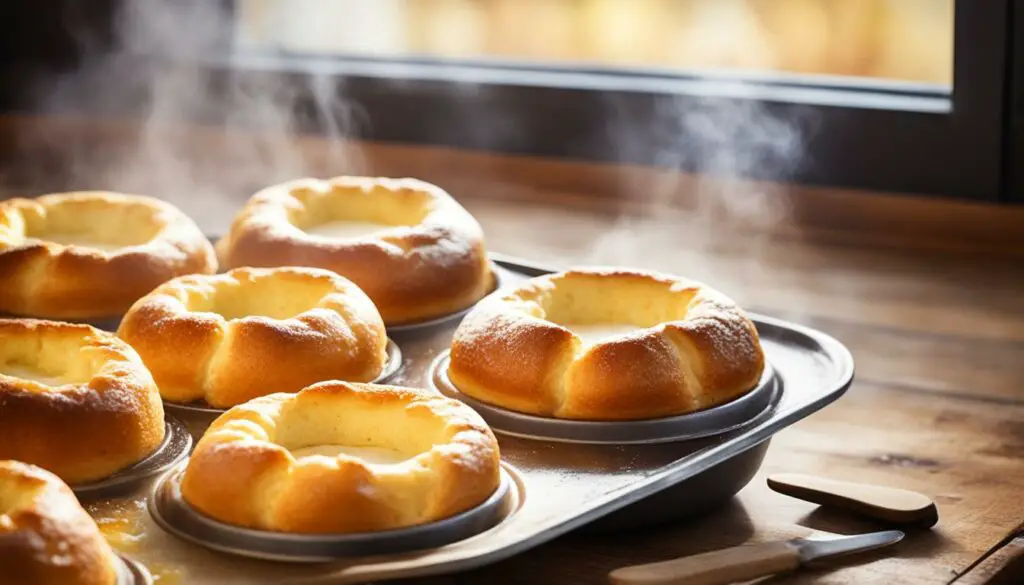
When it comes to making the perfect Yorkshire puddings, the filling and baking process is just as important as the batter itself. Follow these tips to ensure that your puddings turn out golden, risen, and delicious.
Filling the Yorkshire Pudding Tin
There are two methods you can use to fill your Yorkshire pudding tin: a hob-safe tin or pouring the batter directly into the tin in the oven.
- If your oven loses heat quickly, it’s recommended to use a hob-safe Yorkshire pudding tin. Fill the tin holes over high heat on the stove before quickly returning the tin to the oven. This helps minimize heat loss and ensures a good rise.
- If your oven retains heat well, you can pour the batter directly into the tin while it is still in the oven. This saves time and prevents unnecessary heat loss.
Whichever method you choose, be sure to fill the tin quickly and efficiently to maintain the batter’s temperature and airiness.
Baking Time for Yorkshire Puddings
The baking time for Yorkshire puddings may vary depending on your oven and the size of your puddings. The general guideline is to bake them for around 15-18 minutes or until they are risen and crisp.
It’s important to avoid opening the oven door during the first 15 minutes of baking to prevent heat loss and ensure a good rise. Opening the oven door too early can cause the puddings to collapse.
A good way to test if your Yorkshire puddings are ready is to gently press the top. If they feel firm and crispy, they’re done. If they still feel a bit soft, give them a few more minutes in the oven.
Remember to keep an eye on your puddings towards the end of the baking time as they can quickly go from golden brown to burnt.
| Tin Size | Baking Time |
|---|---|
| Miniature | 12-15 minutes |
| Standard | 15-18 minutes |
| Large | 18-20 minutes |
These times are approximate and should be adjusted based on your oven and personal preference for the level of crispiness.
Remember, practice makes perfect when it comes to Yorkshire puddings. Don’t be discouraged if your first batch doesn’t turn out exactly as you hoped. With a little patience and these tips, you’ll be baking delicious puddings in no time.
Serving Suggestions for Yorkshire Puddings

Yorkshire puddings are a versatile addition to any meal, and they can be enjoyed in various ways. While they are traditionally served with roast dinners, particularly alongside succulent roast beef, they also pair well with other meats like roast chicken, lamb, turkey, or pork. The light and fluffy texture of Yorkshire puddings complements the savory flavors of the meat, creating a delightful combination.
Aside from being a delicious accompaniment to roast dinners, Yorkshire puddings can also shine as a side dish for other meals. They pair exceptionally well with dishes like Lancashire hotpot, adding a crisp and airy element to the hearty casserole. They also make a delightful addition to creamy chicken and mushroom casseroles, balancing out the richness of the dish.
But did you know that you can also enjoy Yorkshire puddings as a dessert? Yes, you read that right! Yorkshire puddings can be transformed into a sweet treat by adding delectable toppings. Drizzle them with golden syrup, spread them with your favorite jam, or serve them with a dollop of cream or a scoop of ice cream. The contrast between the crispy exterior and the soft, sweet filling is simply irresistible.
For more inspiration and tips, check out this comprehensive guide on how to make the perfect Yorkshire puddings from BBC Good Food.
Recap:
– Yorkshire puddings are traditionally served with roast dinners, especially roast beef.
– They can also be enjoyed with other meats like roast chicken, lamb, turkey, or pork.
– Yorkshire puddings make a great side dish for meals such as Lancashire hotpot or creamy chicken and mushroom casserole.
– For a delightful twist, try serving Yorkshire puddings as a dessert with toppings like golden syrup, jam, cream, or ice cream.
Pro Tips for Making the Perfect Yorkshire Puddings

Follow these pro tips to ensure the perfect Yorkshire puddings every time.
- Stir instead of whisk: When mixing the batter, stir gently instead of whisking too hard. Overmixing can create tough and dense puddings, so aim for a smooth consistency without excessive air incorporation.
- Refrigerate the batter: After preparing the batter, refrigerate it for at least 30 minutes, or even overnight. This allows the starch in the flour to swell, resulting in a lighter and crispier texture when baked.
- Use an oven thermometer: Ensure the oven reaches and maintains the correct temperature of 220C/425F. An oven thermometer can help you accurately monitor the heat and achieve consistent results.
- Hot fat or oil: Before adding the batter, make sure the fat or oil in the tin is hot and smoking. This helps create the signature puff and crispiness of the puddings.
- Avoid opening the oven door: During the first 15 minutes of baking, do not open the oven door. Opening it can cause a drop in temperature and disrupt the rising process, resulting in flat puddings.
Following these tips can help troubleshoot common issues, such as puddings not rising enough or becoming too flat. With practice and attention to detail, you’ll be able to consistently achieve perfect Yorkshire puddings that are fluffy, golden, and irresistible.
Traditional Yorkshire Pudding Recipe
Are you ready to recreate a classic Yorkshire pudding recipe that will impress your friends and family? Look no further! Here is a step-by-step guide to making delicious and authentic Yorkshire puddings that are bound to be a hit. Let’s gather the ingredients and get started!
The Ingredients:
- 1 cup plain flour
- 2 large eggs
- 1 cup milk
- 2 tablespoons beef dripping or lard
- A pinch of salt and black pepper
The Step-by-Step Guide:
- Preheat your oven to 220C/425F.
- In a mixing bowl, combine the plain flour, eggs, and milk. Whisk them together until you have a smooth batter.
- Add a pinch of salt and black pepper to enhance the flavors of the batter.
- Cover the bowl and refrigerate the batter for at least 30 minutes. This chilling process allows the starch in the flour to swell, resulting in lighter and crispier Yorkshire puddings.
- While the batter is chilling, place the beef dripping or lard into a Yorkshire pudding tin and put it in the preheated oven. Allow the fat to become smoking hot.
- Once the batter has chilled, remove the tin from the oven and quickly pour the batter into the individual sections of the tin, filling them up to about two-thirds full.
- Place the tin back into the oven and bake for 15-18 minutes, or until the Yorkshire puddings have risen, turned golden brown, and become crispy.
- Remove the tin from the oven and transfer the Yorkshire puddings to a wire rack to cool slightly.
- Serve your delicious homemade Yorkshire puddings alongside your favorite roast dinner or meal. Enjoy!
Follow this traditional Yorkshire pudding recipe, and you’ll have delightful puddings that perfectly complement any savory dish. The combination of the crispy outside and the soft, fluffy inside will have everyone reaching for seconds. Give it a try, and let the traditional flavors of Yorkshire puddings transport you to a British feast.
| Ingredients | Quantity |
|---|---|
| Plain Flour | 1 cup |
| Eggs | 2 large |
| Milk | 1 cup |
| Beef Dripping or Lard | 2 tablespoons |
| Salt | A pinch |
| Black Pepper | A pinch |
Using Self-Raising Flour in Yorkshire Pudding Recipe
When it comes to making Yorkshire puddings, the choice of flour plays a crucial role in achieving the perfect texture and rise. While self-raising flour may seem like a convenient option, using plain flour is generally recommended for the best results.
Self-raising flour is a pre-mixed combination of plain flour and baking powder, which acts as a leavening agent. This means that it already contains the necessary raising agents, making it unnecessary to add extra baking powder to your recipe. However, this can affect the final outcome of your Yorkshire puddings.
“Using self-raising flour in Yorkshire pudding recipes can result in less rise and a different texture compared to using plain flour.”
The key to achieving light, airy, and well-risen Yorkshire puddings is to have precise control over the leavening agents used. By using plain flour, you have the freedom to adjust the amount of baking powder according to your desired outcome.
Using plain flour in your Yorkshire pudding recipe allows you to have better consistency and control over the rise of your puddings. The texture will be light and airy, with a crisp exterior and a soft, fluffy interior, a hallmark of a perfect Yorkshire pudding.
Self-Raising Flour vs Plain Flour in Yorkshire Pudding
To help you understand the difference between using self-raising flour and plain flour in Yorkshire pudding recipes, let’s compare their characteristics:
| Aspect | Self-Raising Flour | Plain Flour |
|---|---|---|
| Rise | May result in less rise due to the pre-added baking powder | Allows for better control and consistency in achieving the desired rise |
| Texture | May result in a different texture compared to using plain flour | Provides a light and fluffy texture with a crispy exterior |
| Control | Less control over the leavening agents as baking powder is already incorporated | More control over the leavening agents, allowing you to adjust the rise according to your preference |
| Crispness | May lack the desired crispness due to the different composition of self-raising flour | Offers a crispy exterior that pairs perfectly with the tender interior |
As you can see, using self-raising flour can lead to variations in the rise, texture, control, and crispness of your Yorkshire puddings when compared to using plain flour. For consistent and traditional results, it is best to stick with plain flour in your Yorkshire pudding recipe.
Using self-raising flour in Yorkshire pudding recipes can affect the rise and texture, making it best to stick with plain flour for traditional and consistent results.
Conclusion
Yorkshire puddings are a beloved British dish that adds a delicious and flavorful element to a traditional roast dinner. Made with plain flour, eggs, and milk, they are a staple on many Sunday lunch tables across the United Kingdom. While self-raising flour is not commonly used in Yorkshire pudding recipes, opting for plain flour and following the recommended techniques and tips can ensure perfect results every time.
When preparing Yorkshire puddings, it’s important to preheat the oven to the right temperature and maintain it throughout the baking process. Additionally, taking the time to refrigerate the batter before baking allows the pudding to become both golden and crispy on the outside, while remaining fluffy on the inside.
As a versatile side dish, Yorkshire puddings pair well with a variety of toppings and serving suggestions. Whether enjoyed with a roast dinner or as a sweet treat, experimenting with different accompaniments can make your Yorkshire puddings shine.
To explore more Yorkshire pudding recipes and tips, visit All Kitchen Colours, where you can find detailed instructions from renowned chef James Martin.
FAQ
Can I use self-raising flour for Yorkshire pudding?
It is generally recommended to use plain flour for the best results in Yorkshire pudding recipes. Self-raising flour can affect the rise and texture of the puddings.

